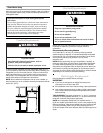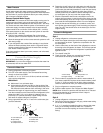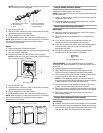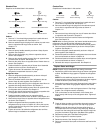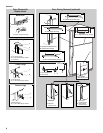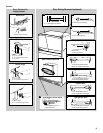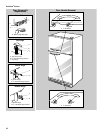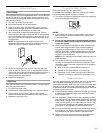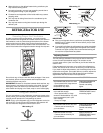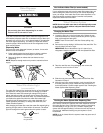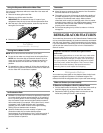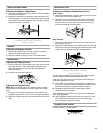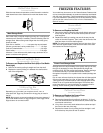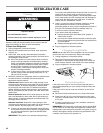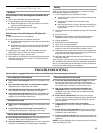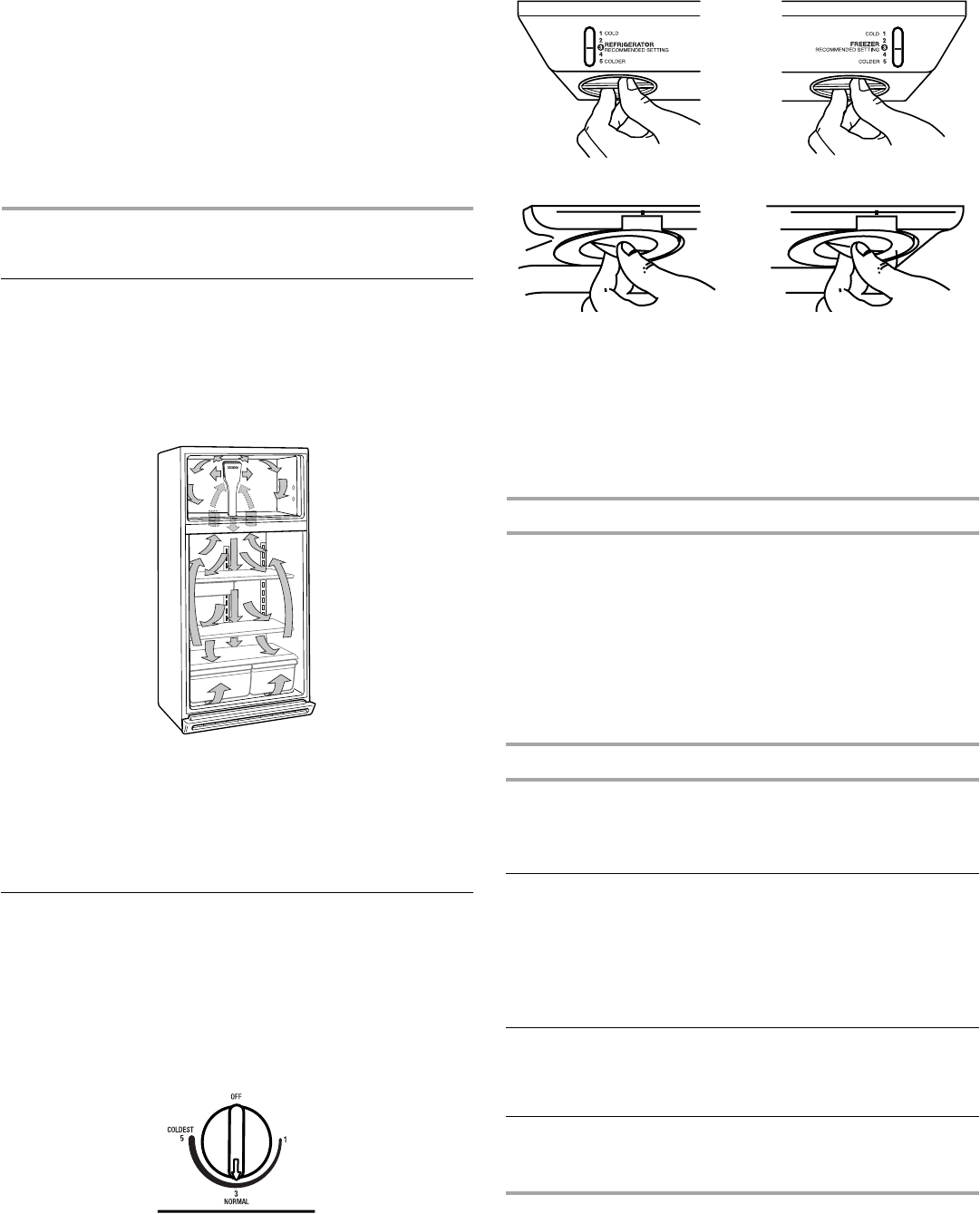
12
■ Water dripping on the defrost heater during a defrost cycle
may cause a sizzling sound.
■ As each cycle ends, you may hear a gurgling sound due to
the refrigerant flowing in your refrigerator.
■ Contraction and expansion of the inside walls may cause a
popping noise.
■ You may hear air being forced over the condenser by the
condenser fan.
■ You may hear water running into the drain pan during the
defrost cycle.
REFRIGERATOR USE
Ensuring Proper Air Circulation
In order to ensure proper temperatures, you need to permit
airflow between the refrigerator and freezer sections. As shown in
the illustration, cool air enters through the bottom of the freezer
section and moves up. Most of the air then flows through the
freezer section vents and recirculates under the freezer floor. The
rest of the air enters the refrigerator section through the top vent.
Do not block any of these vents with food packages. If the vents
are blocked, airflow will be prevented and temperature and
moisture problems may occur.
IMPORTANT: Because air circulates between both sections, any
odors formed in one section will transfer to the other. You must
thoroughly clean both sections to eliminate odors. To prevent
odor transfer and drying out of food, wrap or cover foods tightly.
Using the Controls
For your convenience, your refrigerator controls are preset at the
factory. When you first install your refrigerator, make sure that the
controls are still preset to the mid-settings as shown.
NOTE: To turn your refrigerator off, turn the refrigerator control to
the word OFF or until the word OFF appears. Your product will
not cool when the refrigerator control is set to OFF.
Mid-setting “3”
Mid-setting “3”
Mid-setting “4”
IMPORTANT:
■ Give your refrigerator time to cool down completely before
adding food. It is best to wait 24 hours before you put food
into the refrigerator.
■ If you add food before the refrigerator has cooled completely,
your food may spoil. Adjusting the Refrigerator and Freezer
Controls to a higher (colder) than recommended setting will
not cool the compartments any faster.
Adjusting Controls
The mid-settings indicated in the previous section should be
correct for normal household usage. The controls are set
correctly when milk or juice is as cold as you like and when ice
cream is firm.
If the temperature is too warm or too cold in the refrigerator or
freezer, first check the air vents to be sure they are not blocked.
If you need to adjust temperatures, use the settings listed in the
chart below as a guide. On models with two controls, adjust the
refrigerator temperature first. Wait at least 24 hours between
adjustments and then recheck the temperatures.
CONDITION/REASON: ADJUSTMENT:
REFRIGERATOR section too warm
- Door opened often, large amount
of food added or room
temperature very warm
Adjust REFRIGERATOR
or TEMPERATURE
Control one setting
higher
FREEZER section too warm/ice
not made fast enough
- Door opened often, or large
amount of food added or very cold
room temperature (can’t cycle
often enough)
- Heavy ice usage
Adjust FREEZER or
TEMPERATURE Control
one setting higher
REFRIGERATOR section too cold
- Controls not set correctly for
your conditions
Adjust REFRIGERATOR
or TEMPERATURE
Control one setting
lower
FREEZER section too cold
- Controls not set correctly for
your conditions
Adjust FREEZER or
TEMPERATURE Control
one setting lower
4
REFRIGERATOR
4
FREEZER



